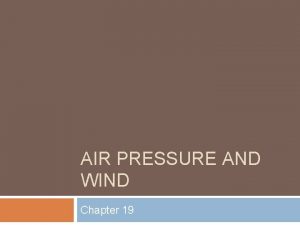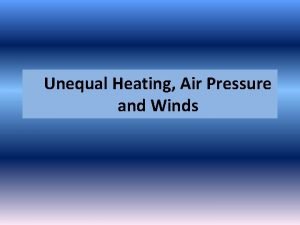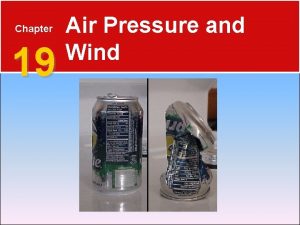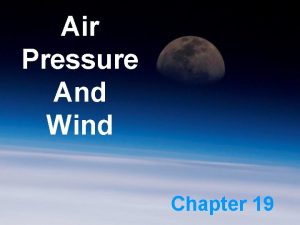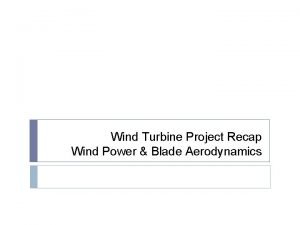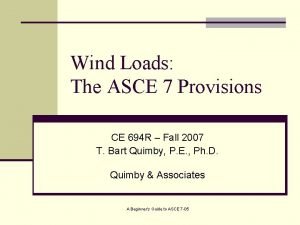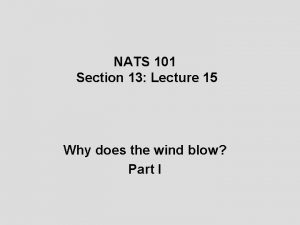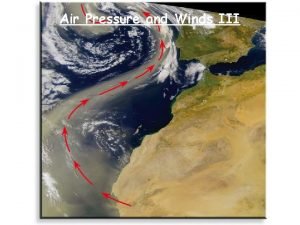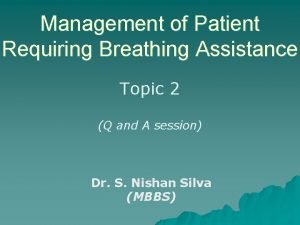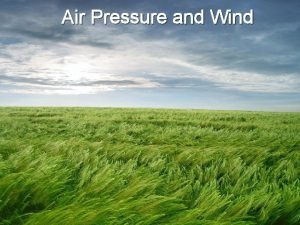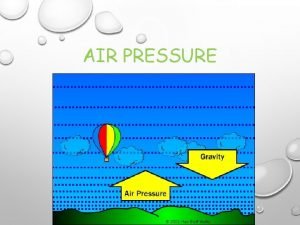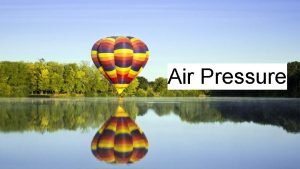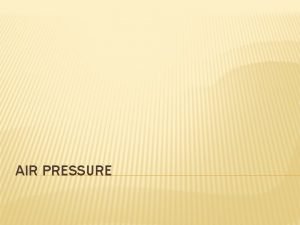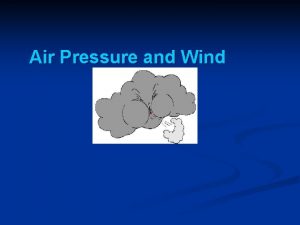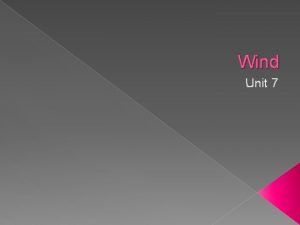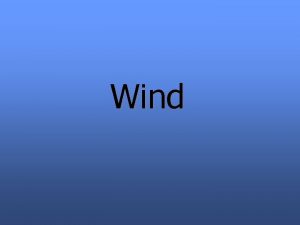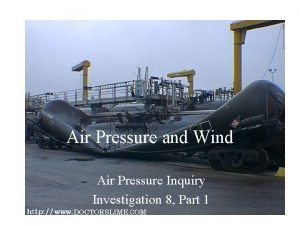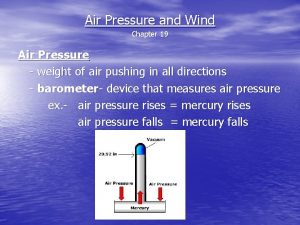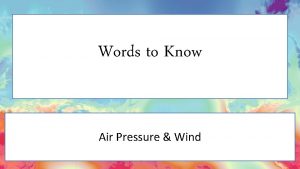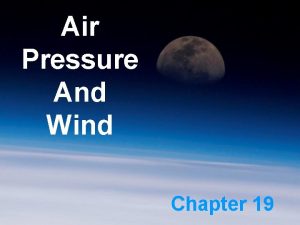CH 19 Air Pressure Wind Air Pressurethe pressure













- Slides: 13

CH. 19: Air Pressure & Wind Air Pressure=the pressure exerted by the weight of air above. Air pressure is very important factor in predicting the weather! Air pressure at sea level is 14. 7 lbs per square inch.

Barometer=instrument used to measure air pressure. 2 TYPES: 1. Aneroid—canister like device, pressure changes on the spring move the arrow 2. Mercury—liquid device, pressure changes make the liquid go up(high) & go down(low)

What causes wind? Wind is the horizontal movement of air. Wind is caused by the horizontal differences in air pressure. The differences in air pressure are in turn caused by differences in temperature(solar radiation)

3 Factors Affecting Wind: 1. Pressure Differences—greater the difference the greater the wind. l l l Air moves from high to low pressures Isobars=lines of equal pressure Closely packed = windy Widely spaced = not as windy Pressure Gradient=steep means windy Pressure Gradient=weak/not steep means Not windy

2. Coriolis Effect—Earth’s rotation affects moving objects --Free moving objects move to the right in the northern hemisphere & to the left in the southern. 3. Friction—only important near Earth. Friction slows wind & can change wind direction. JET STREAMS=high up & fast moving!

19. 2 Pressure Centers & Wind Pressure Centers—help 2 predict weather (2) Low (Cyclones) = air is unstable & rises, cools, condenses, clouds = stormy, cloudy, air moves ccw in N. hemisphere, winds move inward (? ) Pressure decreases toward center High (Anti-Cyclones) = air is stable & descends, warms, evaporates, clear/fair, air moves cw in N. hemisphere, winds move outward (? ) Pressure increases toward center

GLOBAL WINDS (read pgs 540 -542) 0 degrees = equatorial low 30 degrees = subtropical high 60 degrees = subpolar low 90 degrees = polar high

Trade Winds = belt between 0 & 30 Prevailing Westerlies=belt between 30 & 60 Polar Easterlies=belt between 60 & 90 What is the polar front? Page 541 What are monsoons? Page 542

19. 3 Regional Wind Systems Local Winds—small-scale winds are produced by a locally generated pressure gradient. Local Winds—are caused by 2 things: 1. by topographic effects (mtns. Etc. ) 2. by variations in surface composition (land or water, etc. )

4 Types of Local Winds: 1. Sea Breeze—happens during the day, land heats up quicker & causes air to rise allowing cooler air to come from the sea. 2. Land Breeze—happens during the night, land cools of quicker & causes the warmer air over the sea to rise allowing cooler air to come from the land.

3. Valley Breeze—occurs during the day, air rises from valley floors. 4. Mountain Breeze—occurs at night, air sinks from the mountain tops toward the valley floor.

MEASURING WIND Wind Direction—wind vane, wind direction is given by the direction the wind is coming FROM, (N, S, E, or W) or sometimes given in degrees! Wind Speed—anemometer. Wind Socks—see them at airports measure wind speed & direction!

El Nino & La Nina Read about these phenomena carefully! When do they occur? Why do they occur? What global/local affects occur? Global ppt. Distribution? Read page 548—Why does it rain in some places more than others?
 Chapter 19 air pressure and wind wordwise answer key
Chapter 19 air pressure and wind wordwise answer key Study jams air pressure and wind
Study jams air pressure and wind Winds are labeled according to
Winds are labeled according to Chapter 19 air pressure and wind
Chapter 19 air pressure and wind Kurshalter
Kurshalter Air mass vocabulary
Air mass vocabulary Barometer
Barometer Pt tanah air sentosa
Pt tanah air sentosa Power force x velocity
Power force x velocity Velocity pressure exposure coefficient
Velocity pressure exposure coefficient Coriolis force
Coriolis force Wind pressure gradient
Wind pressure gradient Horizontal movement of air
Horizontal movement of air Sore throat after surgery
Sore throat after surgery
